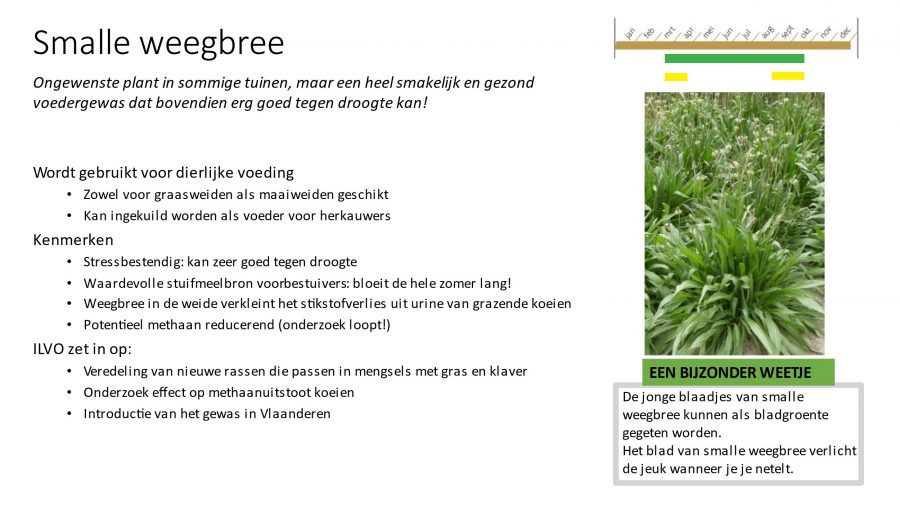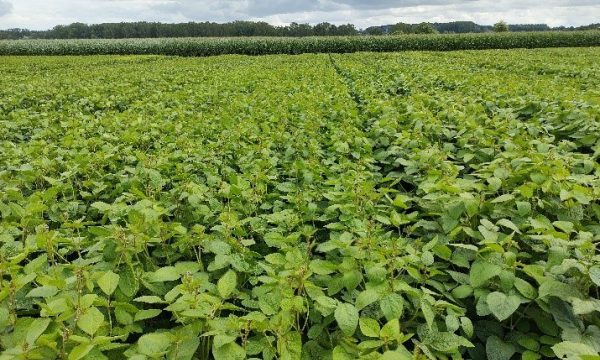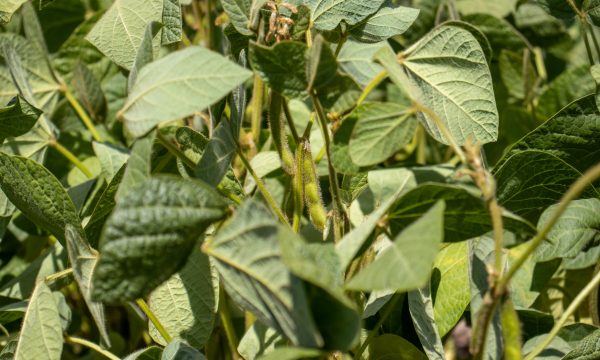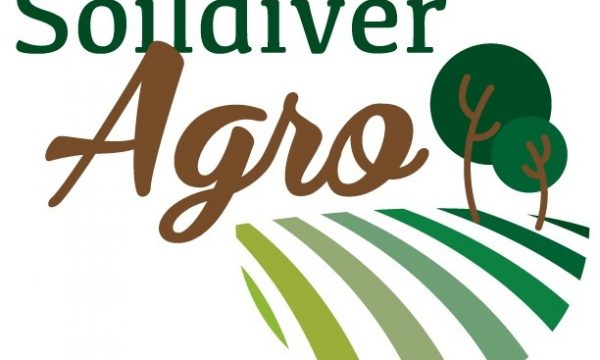Press release Breeding: Plantain for nutritious biodiversity in pastures

In 2022, ILVO began breeding what many people know as a "weed": plantain.
One reason is the growing demand for biodiversity in our agricultural grasslands. Seed mixtures for a biodiverse meadow include, along with the traditional grasses, leguminous plants and herbs such as yarrow, chicory and plantain.
European origin? Plantain can be found on roadsides and in natural grasslands. Remarkably, plantain has been bred in New Zealand for the last 30 years to be sown in abundance in dairy pastures. According to New Zealand research, the plant provides substances that inhibit nitrification (nitrogen formation) (biological nitrification inhibitors, BNIs) during ruminant digestion. The cow's nitrogen utilization thus improves when plantain is ingested, so less nitrogen escapes to the environment and soil.
ILVO sees four other positive characteristics at the start of the European breeding program:
- The plant is rich in pollen which is appreciated by pollinators (bees, bumblebees, ...)
- Grassland with plantain may stay productive longer during droughts, as plantain is quite drought tolerant and highly productive. In grass verges, for example, you can also see how resilient the plant remains even under harsh soil and climate conditions.
- Cows find it very tasty, and the plant also promotes cattle health due to its high mineral content.
- A fourth possible asset is that narrow plantain may also act to reduce methane production in ruminants. Methane (greenhouse gas!) is formed in cows in the rumen. Whether plantain actually does influence this process is currently being verified and quantified with experiments by ILVO. If the hypothesis is correct, then feed containing plantain could reduce greenhouse gas emissions from dairy farming.
So why breeding?
Mathias Cougnon, plant breeder at ILVO: "The only commercial varieties available SW are New Zealand. With us, they flower too early. From April on, you already get harder stems that reduce the feed value. The frost tolerance and persistence (regrowth after cutting) also need to be better. And we are trying to increase productivity (yield)."
lLVO expects to introduce new varieties better adapted to Northwest European conditions in a few years.


